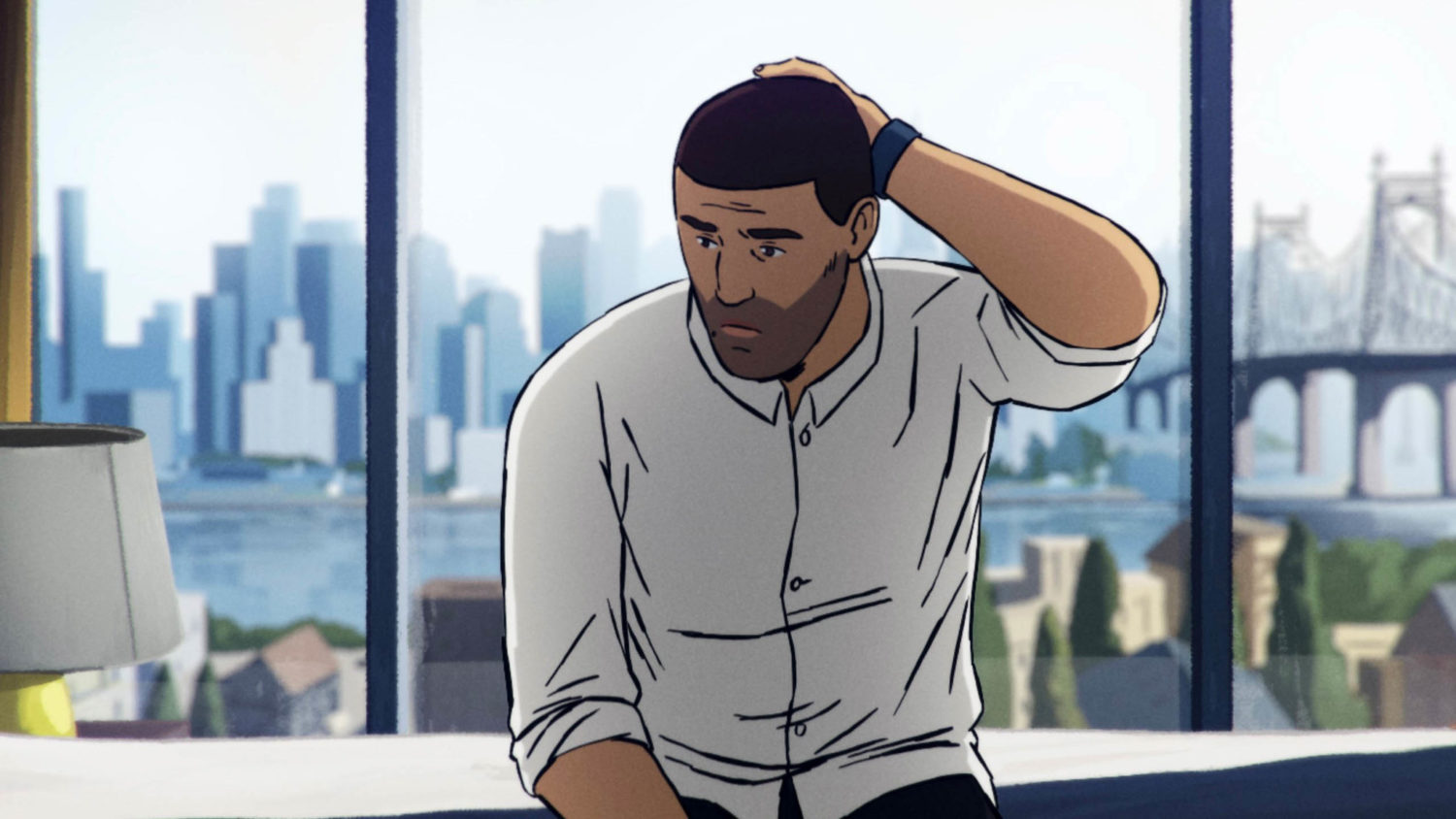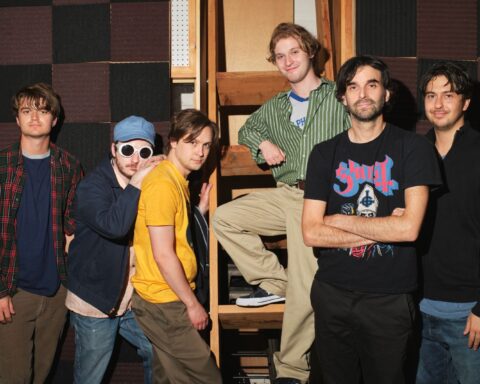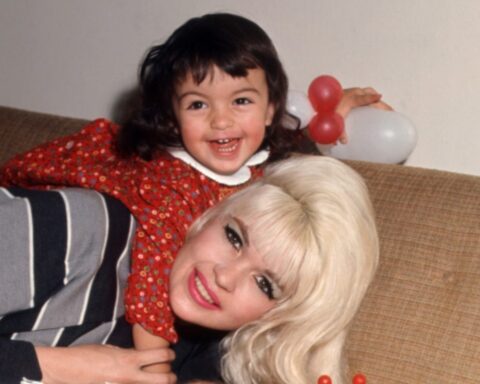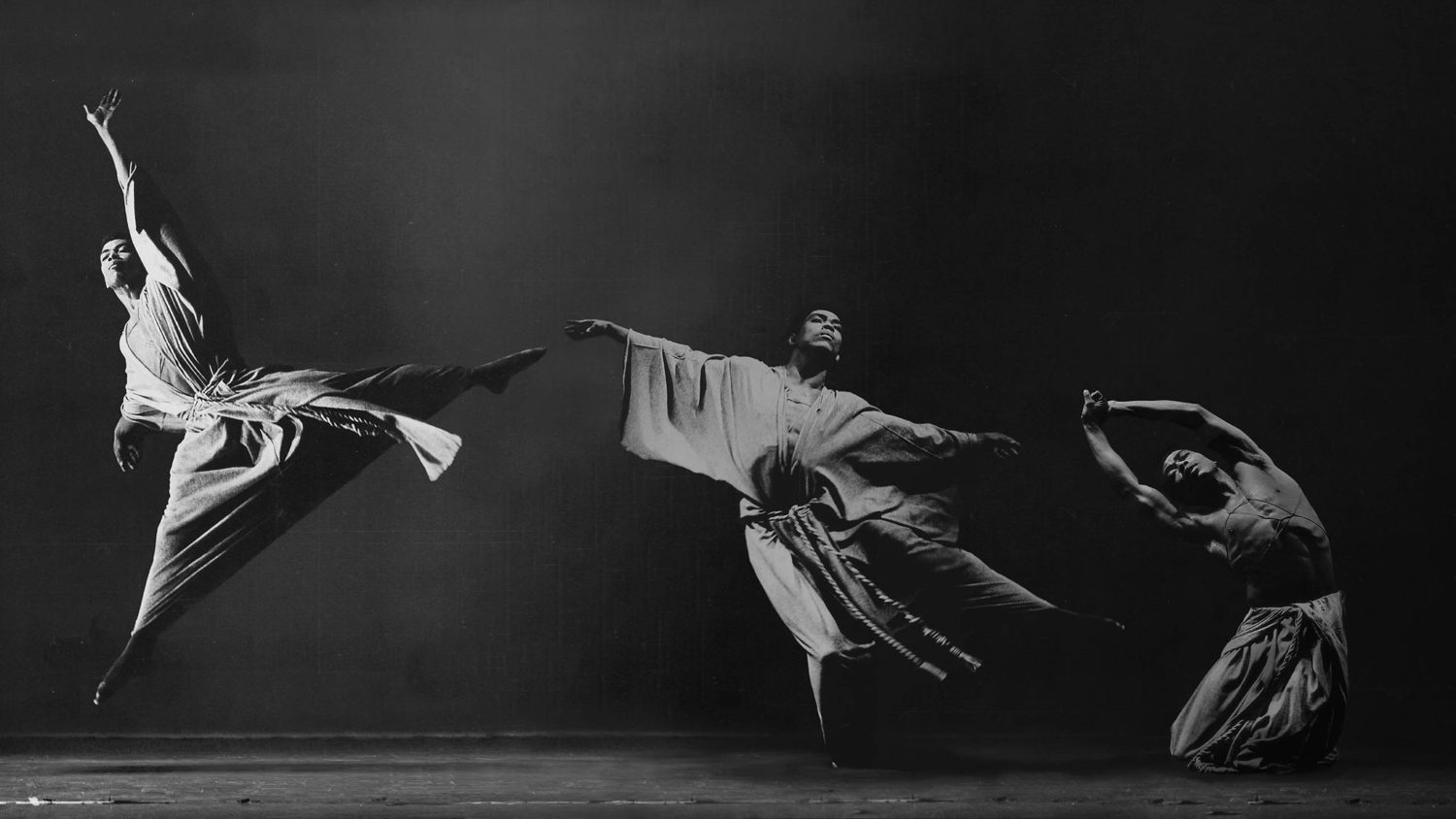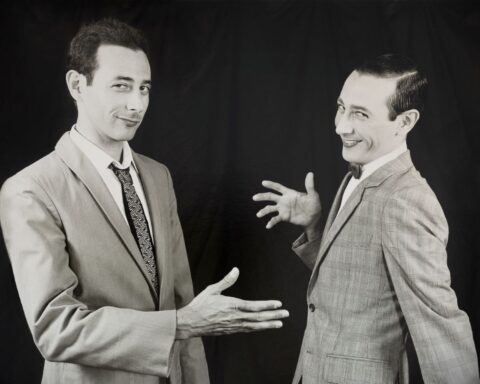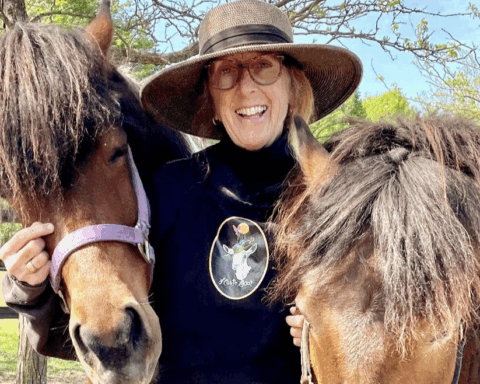POV’s second report from this year’s Sundance Film Festival surveys three docs in competition. Two of them strikingly convey the power of animation in documentary, while another two offer therapeutic outlets for their subjects, albeit with different results from for the audience.
Flee
(Denmark/France/Sweden/Norway, 90 min.)
Dir. Jonas Poher Rasmussen
Programme: World Cinema Documentary Competition
Flee documents the unfilmable. Riveting testimony by Amin Nawabi (a pseudonym) fuels this odyssey of survival and acceptance. The 36-year-old subject recalls to his long-time friend, filmmaker Jonas Poher Rasmussen, the story of how he came to Denmark. It includes a tense journey in which his family escaped Afghanistan and the Mujahedeen in 1990s, eventually landing in Russia, and survived off the grid once their visas expired. Being refugees who were forced to abandon their lives, Amin’s family could hardly have been expected to document their account. The same goes for the dangerous trips with human traffickers: one simply can’t bring cameras into the forests at the dead of night or into cargo holds of rickety ships.
What Amin can do, however, is remember them. He tells his story to Rasmussen in vivid detail, recalling aspects of his life he doesn’t even dare share with his fiancé. Flee uses the audio of Amin’s testimony as a springboard to animate the experience of surviving in liminal spaces. It visualizes the world of people like Amin and his family for whom being seen, observed, or documented can mean the difference between life and death. Flee transports audiences to dark corners of the world one never hopes to see in real life.
Moreover, this animation creates a safe space for Amin as the therapeutic interview sessions—Rasmussen has Amin lie on a bed and tell his narrative with his eyes closed—let him fully embrace and celebrate his identity as a gay man. (His memories of getting hot for posters of Jean-Claude Van Damme are a highlight, while the poppy soundtrack delivers an earworm discotheque.) Flee is the story of someone who was in hiding while hiding, carefully masking every aspect of his soul from the family members who shared a stake in his survival.
Comparisons to Ari Folman’s 2008 hit Waltz with Bashir are inevitable for this animated documentary, but Flee more than capably meets the bar set by its predecessors. This film will and should be studied for years to come. It’s a sensitive and urgent testament to refugee experiences. Moreover, the animation preserves the subject’s privacy and security while evoking questions of absence and erasure. Most compelling, however, are the animated interludes that offer poetic interpretations of memories that Amin can’t articulate: the violence, the trauma, and the pain. These moments are most effective because they call upon the viewers to imagine the journey in their own minds. – Pat Mullen
Rebel Hearts
(USA, 99 min.)
Dir. Pedro Kos
Programme: US Documentary Competition
Hollywood nuns defy the man (while staying true to the big man upstairs) in Rebel Hearts. The film follows the Sisters of the Immaculate Heart of Mary in the mid-1960s as they began to advocate for the freer lives while fighting to remain within the structure of the Catholic Church. From the moment that the soon-to-be nuns donned their wedding gowns to make a lifelong commitment to God, they took their vows seriously – perhaps too seriously for the liking of the men in the upper ranks of the Catholic Church. The sisters’ Christ-inspired sense of justice led them to demonstrate at civil rights protests, advocate for better conditions in the schools they worked in, and push back against the patriarchal dress codes of the habit. This was all to the horror of Cardinal James Francis McIntyre, the film’s antagonist, who threatens to snatch everything away if they don’t go back to being good little nuns. Spoiler alert: they don’t.
The doc draws upon an incredibly thorough array of footage that producer Shawnee Isaac-Smith collected over decades and had been developing for years. Its visual style takes cues from the fiercest of the sisters, Corita Kent, who began as an art teacher in one of the Catholic schools that the covenant oversaw and blossomed into a prolific visual artist. Her work reflected the shifting moods and activism of the group as it progressed, and the film takes visual cues from her style in the animation that’s woven throughout to emphasize dramatic climaxes. In entertaining and vivid detail, Rebel Hearts unearths a lesser-known gem of feminist history that deserves to be common knowledge. – Madeline Lines
The Most Beautiful Boy in the World
(Sweden, 94 min.)
Dir. Kristina Lindström, Kristian Petri
Programme: World Cinema Documentary Competition
Time has not been kind to Björn Andrésen. Director Luchino Visconti famously declared Andrésen “the most beautiful boy in the world” when he discovered the then-15-year-old Swedish actor and cast him as a lithe Adonis in Death in Venice. This look back at Andrésen’s explosion as a teen heartthrob sees a shy and bashful boy transform into a reluctant sensation. Footage of his audition for Visconti shows the Dream Factory in its most nightmarish form as the director gushes over the young boy’s golden locks, delicate features, and aura of innocence. The young Andrésen has the X Factor in his audition even as he squeamishly poses for Visconti and lets the camera steal his soul.
There’s danger in confusing children with angels, however, and The Most Beautiful Boy in the World looks at the lingering effects of lost innocence. It observes the now-66-year-old Andrésen, dishevelled and hardened by life, as he lives in squalor—he’s fighting an eviction when the doc begins—and remains tormented by his film breakthrough. Cinephiles looking for film-on-film novelties won’t necessarily find them, however, as the doc offers relatively little on Death in Venice outside of the audition and press tour footage. It mostly repeats the stories of Visconti’s protective obsession over his star and Andrésen’s rise an ingénue who made boys in art house cinemas swoon.
While one can appreciate that Andrésen didn’t ask to become a gay icon, Boy inadvertently adopts an undercurrent of homophobia. Andrésen mostly seems intent on proving his heterosexuality and making audiences know that Visconti endowed upon him an unwanted label. Andrésen hasn’t done much work of note in the 50 years since Death in Venice aside from a recent supporting turn in Ari Aster’s horror flick Midsommar, either, which makes the portrait as redundant as it is provocative. On one hand, it illustrates the dangers of wallowing in the past. On the other, it illuminates a dark childhood that went unexamined by a world enamoured with a young boy’s beauty. Boy provides a cautionary tale for parents and guardians forcing their kids into unwanted stardom. 50 years on, they might still need therapy—but at least they can get another movie out of it. – Pat Mullen
Sundance 2021 runs from Thursday, Jan 28 to Wednesday, February 3.




